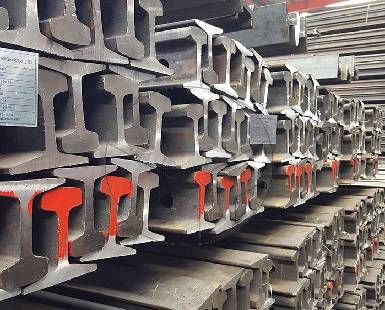The rail is the main component of the track. The operation of the Steel Rail is to guide the wheels of the vehicle forward, directly bear various forces from the wheels and other aspects, and transmit them to the foundation under the rail, while providing a continuous smooth and minimal resistance surface for the rolling of the wheels. In electrified railways or automatically blocked sections, steel rails can also be used as track circuits.
Rail types are conventionally expressed in kilograms per meter of rail mass (kg/m). There are 5 types of railway standard rails in my country, namely 75kg/m, 60kg/m, 50kg/m, 43kg/m, and 38kg/m.
The type of rails on the line should be compatible with the capacity, allowable speed and axle load. The choice of rail type should be considered comprehensively according to transportation conditions. Technically, it must be able to ensure sufficient strength, toughness, wear resistance and stability; economically, it must be able to ensure a reasonable overhaul period and reduce the workload of maintenance.
The standard length of steel rails in my country is 12.5m and 25.0m. Extra heavy and Heavy Steel Rail use 25.0m standard length rails, Light Steel Rail and other types of rails can use 12.5m, 25.0m standard length rails. A shortened rail should be used on the curve. There are three types of 40mm, 80mm and 120mm shorter than the 12.5m standard rail, and three types of 40mm, 80mm and 160mm shorter than the 25.0m standard rail.

Light Steel Rail
Rail breaking refers to one of the following situations:
(1) The rail is broken in full section;
(2) The crack penetrates the entire rail head section;
(3) The crack penetrates the entire rail bottom section;
(4) There is a block with a length greater than 50 mm and a depth greater than 10 mm on the top surface of the rail at a speed not greater than 160km/h, and a length greater than 30mm and a depth greater than 5mm on the top surface of the rail at a speed greater than 160km/h The drop block.
Severely injured and broken rails in the buffer zone of ordinary lines and seamless lines should be replaced in time. The severely injured and broken rails shall be clearly marked to prevent reuse.
Copyright:@2020-2021
Comments Please sign in or sign up to post.
0
0 of 500 characters used